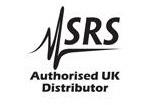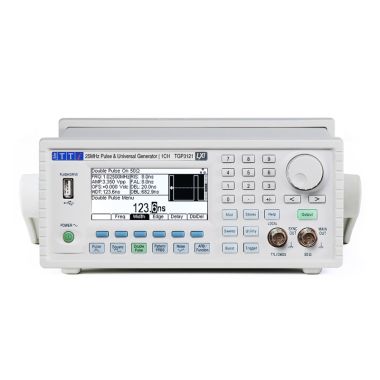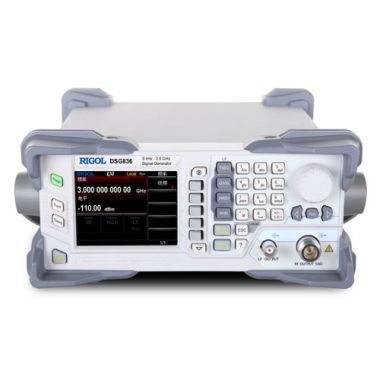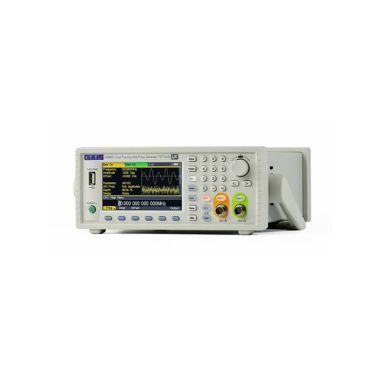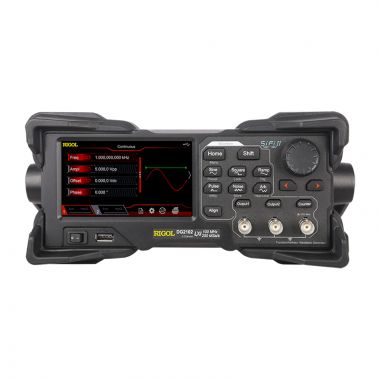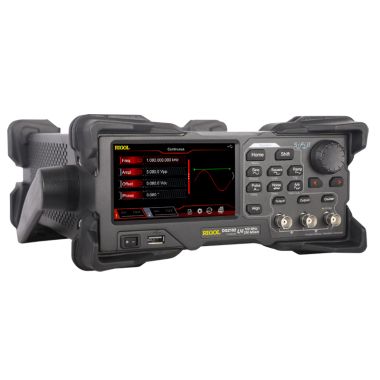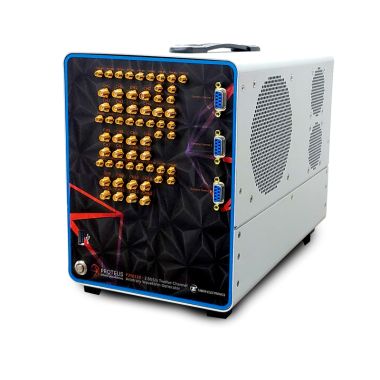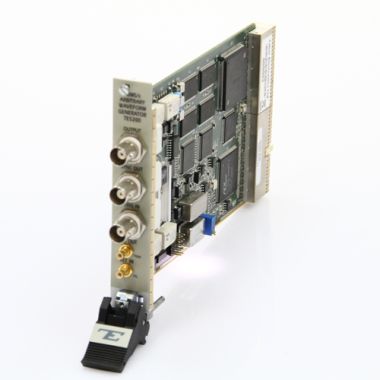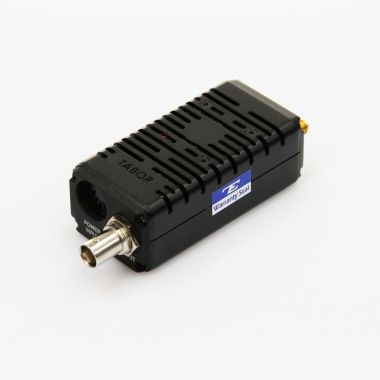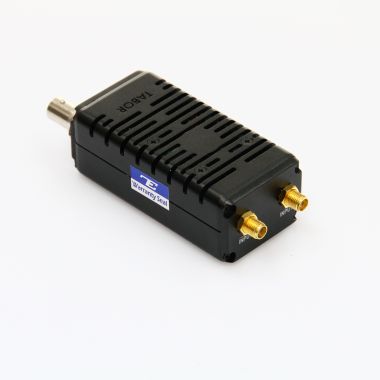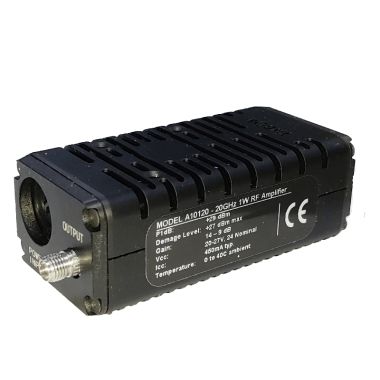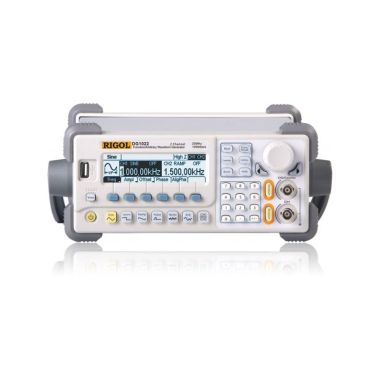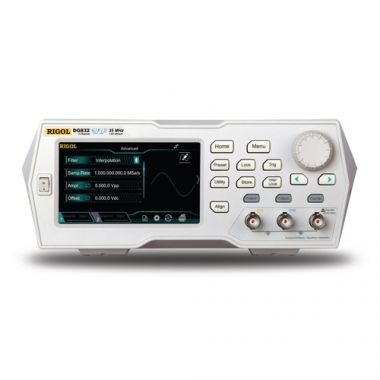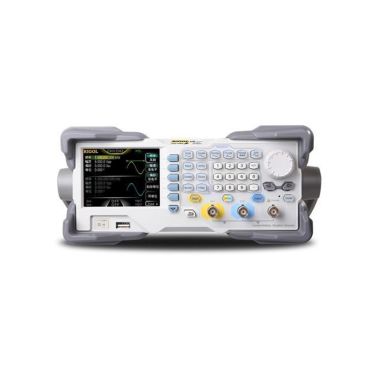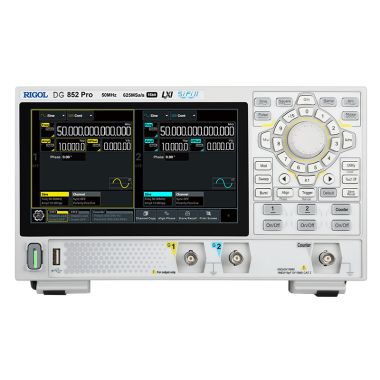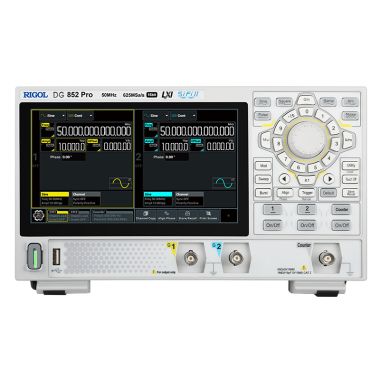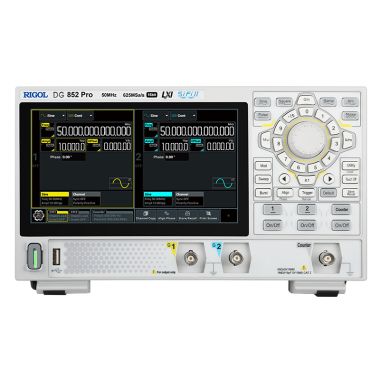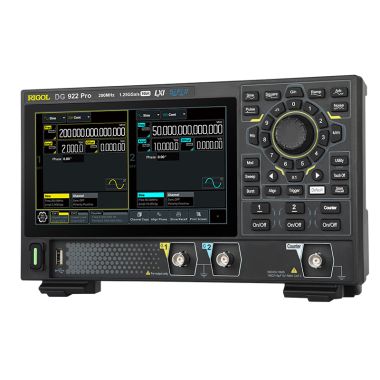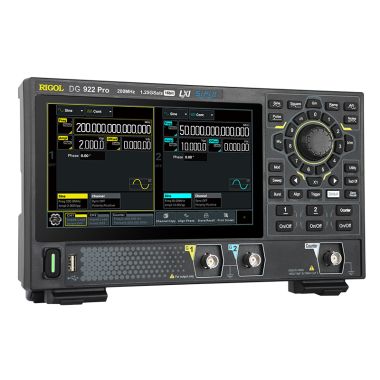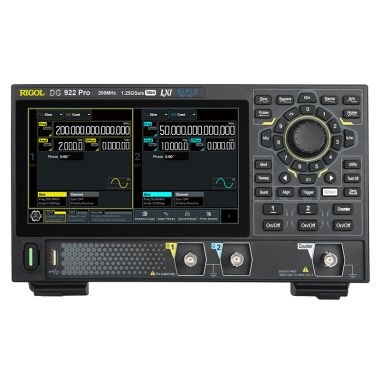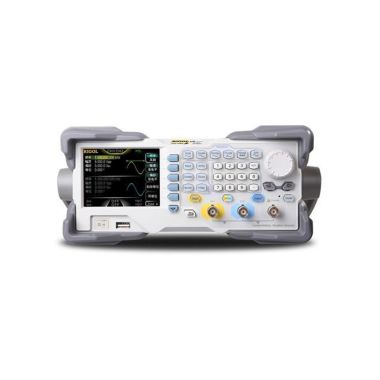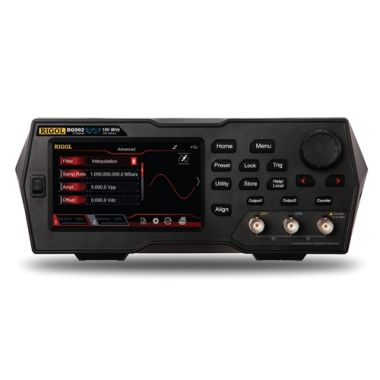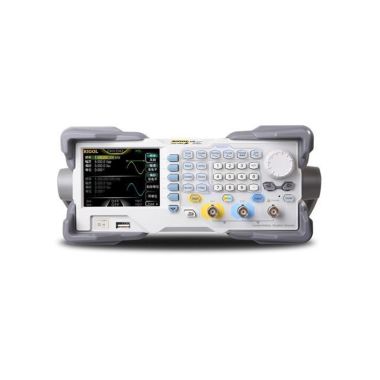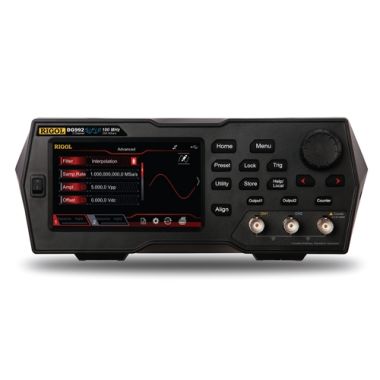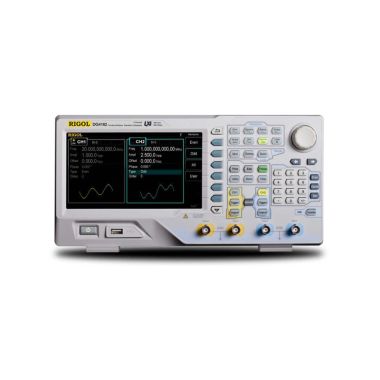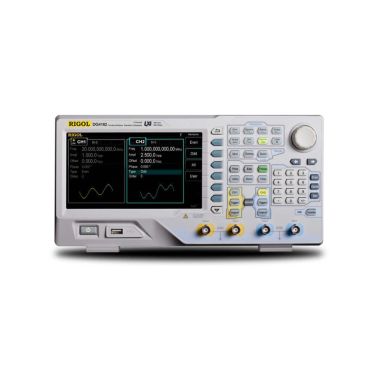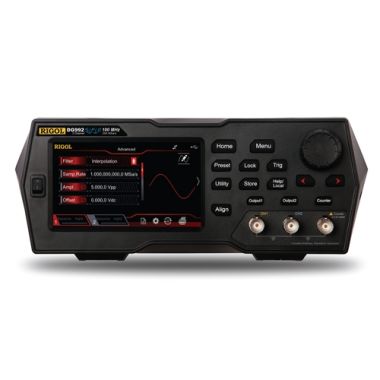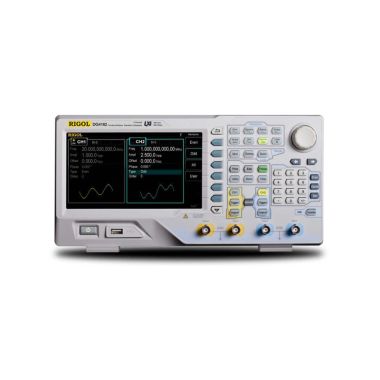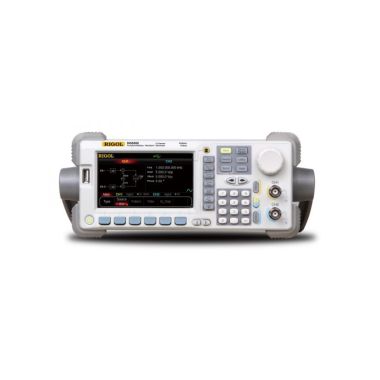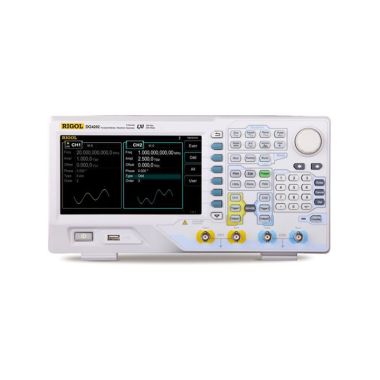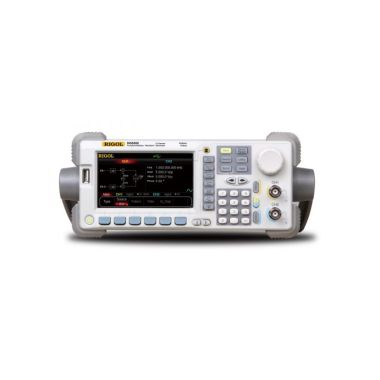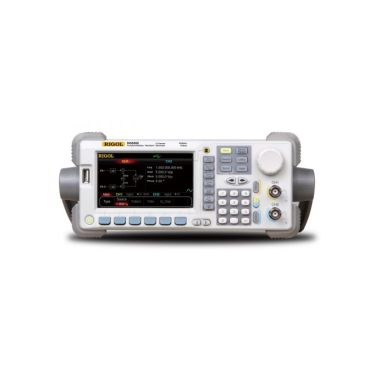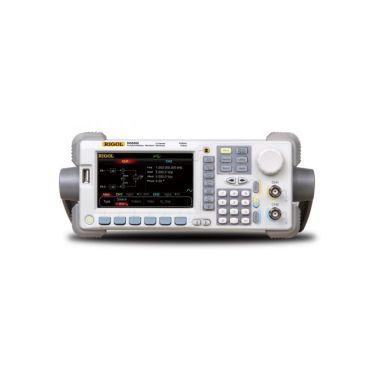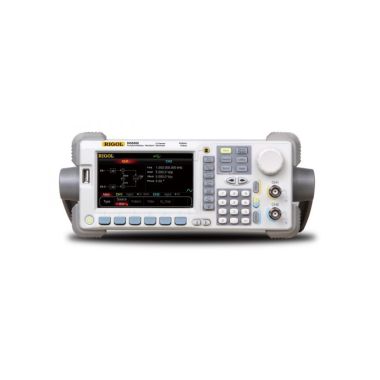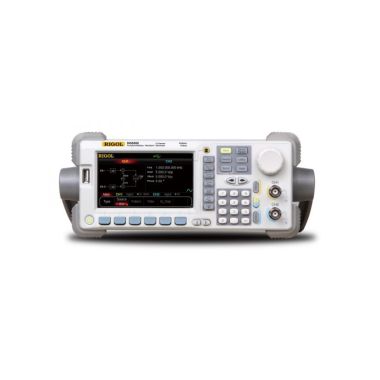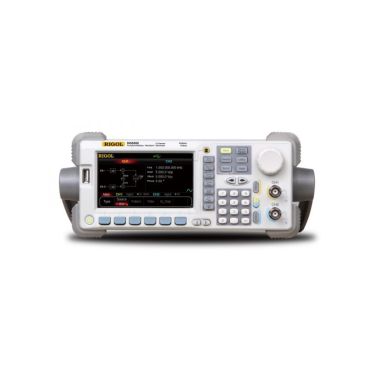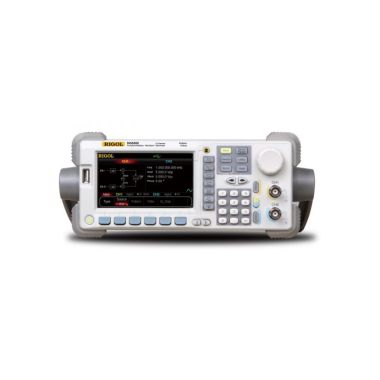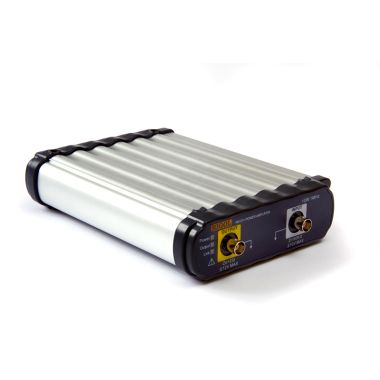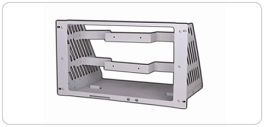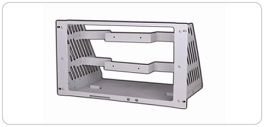SRS DS345 30MHz Function & Waveform Generator
The SRS DS345 DDS Function/Arbitrary Waveform Generator is currently UNAVAILABLE. Please consider our other comparable solutions HERE.
- Frequency output from 1µHz to 30.2 MHz
- 16,300 point arbitrary waveforms
- Sine, square, ramp and noise output
- 10 Vpp output into 50 Ω
- Phase continuous frequency sweeps
- 1µHz frequency resolution
- AM, FM and phase modulation
- Optional RS-232 and GPIB interfaces
Lambda Exclusive Promotion:
Additional 12 months warranty for free (2 years total) via our UK Service Centre.
The Stanford Research Systems DS345 is a full featured 30 MHz synthesised function generator. Using an innovative Direct Digital Synthesis (DDS) architecture, the SRS DS345 provides outputs of high spectral purity, outstanding frequency and phase agility, and remarkably versatile modulation and arbitrary waveform capability.
Functions and Outputs
The standard waveforms - sine, square, ramp and triangle, are all available with 1 µHz frequency resolution. You can generate sine and square waves up to 30.2 MHz or ramps and triangles up to 100 kHz. All functions can be swept over their full frequency range both linearly and logarithmically. There is even a wideband 10 MHz white noise source. With direct digital synthesis, frequency changes are fast (only 25 ns) and are made with no loss of phase continuity.
The DS345 synthesises high accuracy sine and square waves up to a frequency of 30 MHz. Triangle and ramp waveforms up to 100 kHz can also be generated. The frequency resolution is 1µHz in all cases. Frequencies can be simply entered from the front panel using the numeric keypad, or by modifying the existing entry with cursor keys. In addition to the standard function waveforms, the unit also provides a wideband (10 MHz) white noise source.
Both the function output and a TTL SYNC output are available through floating front-panel BNC connectors. Both outputs have 50Ω output impedance and may be floated by ±40 V relative to earth ground. The amplitude of all function outputs is adjustable from 10 mVpp to 10 Vpp with 3 digit resolution. A convenient feature allows the specification and display of amplitudes in either Volts, Volts RMS, or dBm. In addition, standard TTL and ECL output levels can be selected.
Additional useful connectors are provided on the rear panel. A trigger input is used to trigger arbitrary waveforms, modulation patterns, sweeps, and bursts, while a TTL trigger output is provided to allow synchronisation of external devices to sweeps and bursts. A sweep output generates a 0 to 10 V ramp synchronous with frequency sweeps. The sweep marker outputs allow specified portions of a frequency sweep to be highlighted on a plot or oscilloscope display.
The 10 MHz input allows the DS345 to be synchronised to any external timebase. When used in conjunction with another DS345's 10 MHz clock output, it allows the two units to operate in a fixed phase relationship. Two such synchronized DS345's can have their relative phase set between 0° and ±7200° with 0.001° phase resolution.
Waveforms
DDS also gives the DS345 the ability to generate fast, high resolution arbitrary waveforms. Arbitrary waveforms up to 16k points long, with 12 bits of vertical resolution, can be stored and output at sample rates of up to 40 Msamples/s. Powerful PC software to aid in designing and downloading arbitrary waveforms is also available.
The DS345 isn't just a function generator. It's also a full-featured arbitrary waveform generator. You can enter arbitrary waveforms in two formats - as points or as vectors. In the point format the DS345 stores a list of up to 16k output amplitude values. Each amplitude value is specified as a 12-bit integer. In the vector format, data is stored as a list of up to 6144 x, y pairs. Each pair specifies an address in waveform RAM (the x value) and a 12-bit amplitude (the y value). The DS345 computes the values between the specified pairs by linear interpolation. With either format, data in the waveform RAM can be played back at up to 40 Msamples/s, or at any integer submultiple of 40 Msamples/s.
Since composing complex arbitrary waveforms at the keyboard can be a tedious task, Arbitrary Waveform Composer (AWC) software is provided when you order the DS345/01(GPIB and R-S232 interface) option. AWC is a simple, menu-based program which lets you create and edit arbitrary waveforms on the screen, store them, and download them to the DS345. The AWC software lets you download these waveforms to the DS345 or a disk file via the computer interface. AWC runs on all PC compatible computers with 640K of memory and DOS 2.1 or greater. All major graphics modes (CGA/EGA/VGA/HGC) are supported.
Modulation Patterns
The DS345 has unparalleled modulation capabilities. All functions may be modulated in frequency, amplitude, or phase by an internal digitally synthesized modulation source. The internal source provides standard modulation patterns or can be programmed for arbitrary modulation waveforms. Output signals can also be amplitude modulated by an external source.
Performance
The DS345 provides all the features of traditional function generators, sweep generators, and arbitrary waveform generators with no compromise in performance or ease of use. And because it uses Direct Digital Synthesis, the DS345 can provide this performance at a price well below that of conventional function generators.
Modulation
The DS345 allows a wide variety of flexible modulation options. It contains an internal digitally synthesized modulation generator which can modulate any of its standard waveforms except noise. The modulation waveform can be chosen to be a sine, square, triangle, ramp, or an arbitrary modulation waveform can be specified using the optional GPIB or RS-232 interface. Modulation rates from 1 mHz to 10 kHz can be selected with the internal modulation generator.
The internal modulation generator can provide amplitude modulation, frequency modulation, and phase modulation. When using amplitude modulation (AM), modulation depths of ±100% can be selected with 1% resolution. Negative values of modulation correspond to Double Sideband Suppressed Carrier (DSBSC) modulation. To select frequency modulation, you enter a modulation 'span'.' The output frequency will vary between the center frequency plus and minus one half the span. FM spans can be selected with 1 mHz resolution. Finally, with phase modulation, you choose a phase span between 0° and 7200° with 0.001° resolution. The output phase will vary between 0° and the selected phase span. In all three cases, the rear-panel modulation output provides a 0 to 5 Volt signal whose amplitude is proportional to the modulation strength.
In addition to the internal modulation generator, the output waveform can be amplitude modulated by an external signal applied to the rear-panel AM input. This input is always active - even when other modulation types are turned on. Applying 5 Volts at this input causes the output to assume its maximum value, 0 Volts will turn the output off, and -5 Volts will invert the output. The bandwidth of the rear-panel AM input is 15 kHz.
You can generate tone bursts of any output function except noise. In the burst mode, the DS345 will output an exact number of complete waveform cycles after receiving a trigger. By adjusting the phase, you can control where in the waveform the burst begins. While using the burst mode, the maximum frequency for sine and square waves is 1 MHz, while triangles and ramps are limited to 100 kHz. Burst mode may be used with arbitrary waveforms at any frequency. Up to 30,000 complete waveform cycles may be specified in a burst.
The DS345 can frequency sweep any of its function outputs (except noise). You can sweep up or down in frequency using linear or log sweeps. And unlike conventional function generators, there are no annoying discontinuities or band-switching artifacts when sweeping through certain frequencies. The DS345's DDS architecture inherently allows it to perform smooth, phase-continuous sweeps over it's entire frequency range. Sweeps can either be configured as single-shot, repetitive, or bi-directional. When sweeping bi-directionally, the DS345 will sweep from the start to the stop frequency, then from the stop to the start frequency, and repeat.
Two sweep marker frequencies can be specified. When the sweep crosses either of the marker frequencies, a TTL transition is generated at the rear-panel MARKER output to allow synchronisation of external devices to the sweep.
Additional Information
| No. of Channels | 1 |
|---|---|
| Signal Generator Type | Function |
| Bandwidth MHz | 30 |





